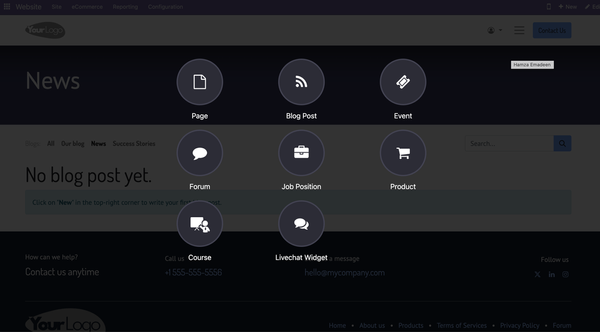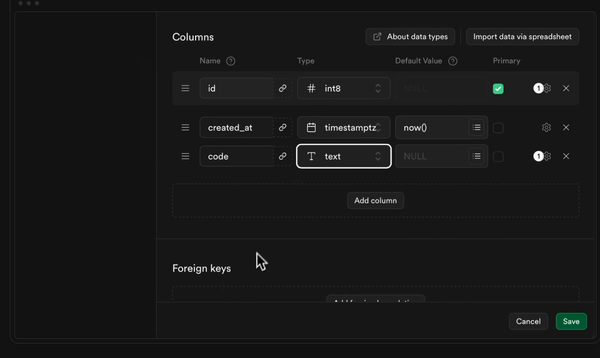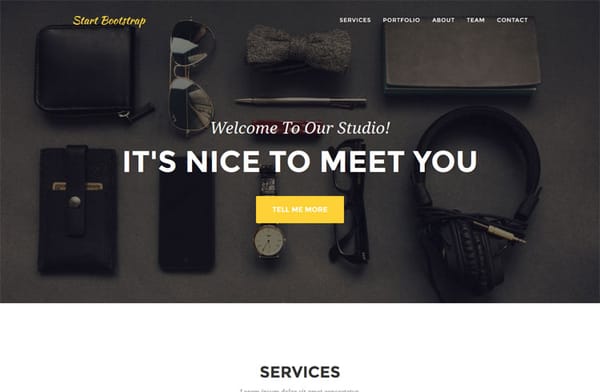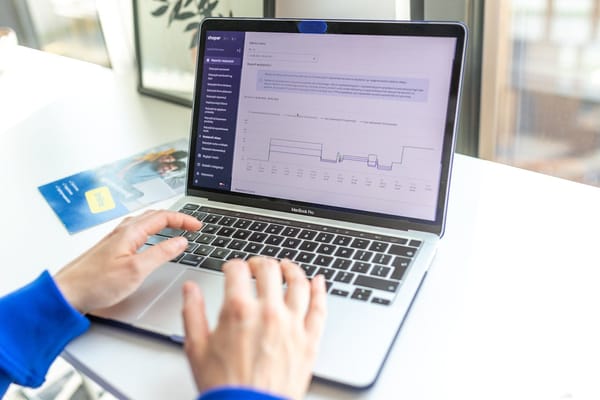18 Well-Established and Time-Honored Content Management Systems (CMS) that were unable to rival WordPress
Table of Content
WordPress is a widely popular content management system (CMS) known for its simplicity, flexibility, and extensive plugin ecosystem. It was first released in 2003 and quickly gained traction due to its user-friendly interface and easy installation process. WordPress allows users to create and manage websites without requiring extensive technical knowledge or coding skills.
The old school CMS solutions like Nuke and Xoops were unable to compete with WordPress for several reasons. Firstly, WordPress offered a more intuitive and user-friendly experience, making it accessible to a wider range of users. Its simple and streamlined interface allowed users to create and manage websites with ease.
Additionally, WordPress had a larger and more active community of developers and users. This meant that there was a wider range of plugins, themes, and resources available for WordPress users. These plugins and themes allowed users to extend the functionality of their websites and customize them to their specific needs. In contrast, the older CMS solutions had smaller communities and fewer resources available.
Another factor that contributed to WordPress's success was its continuous development and updates. The WordPress team regularly released new versions with improvements, bug fixes, and security enhancements. This ensured that WordPress remained up-to-date and compatible with evolving web technologies.
Furthermore, WordPress benefited from its strong focus on blogging and content publishing. It provided a straightforward and efficient way to create and manage blog posts, making it a popular choice for bloggers and content creators.
Overall, the combination of its user-friendly interface, extensive plugin ecosystem, active community, continuous development, and focus on content publishing contributed to WordPress's dominance in the CMS market and why old school CMS solutions like Nuke and Xoops could not compete with it.
In this post, we listed some of the old CMS platforms that we have worked with for many years. Surprisingly, some of them are still active and going strong.
1- Nuke or PHP Nuke (No Longer Active)
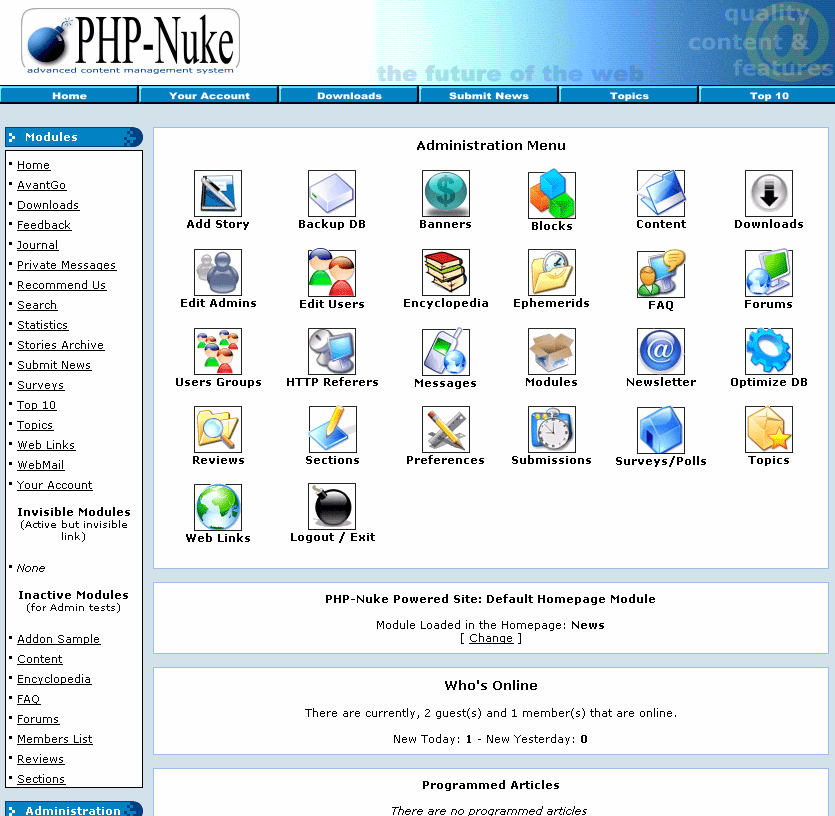
Nuke or PHP-Nuke was one of the first popular CMS ever to dominate the web for a period before the emergence of WordPress. It was originally developed by Francisco Burzi as an automated news publishing system, but it was actually a fork of the Thaware news portal created by David Norman.
PHP-Nuke is a modular system that provides various modules, including forums, a news system, a gallery, a messaging system, and more. Due to its easy and automated installation methods offered by many hosting services, PHP-Nuke gained popularity among its competitors for several years. It is distributed for free and licensed under the GNU/GPL license.
It gained popularity as one of the first popular CMS systems before the emergence of WordPress. However, PHP-Nuke is no longer actively maintained and has been largely replaced by modern CMS platforms.

2- Xoops
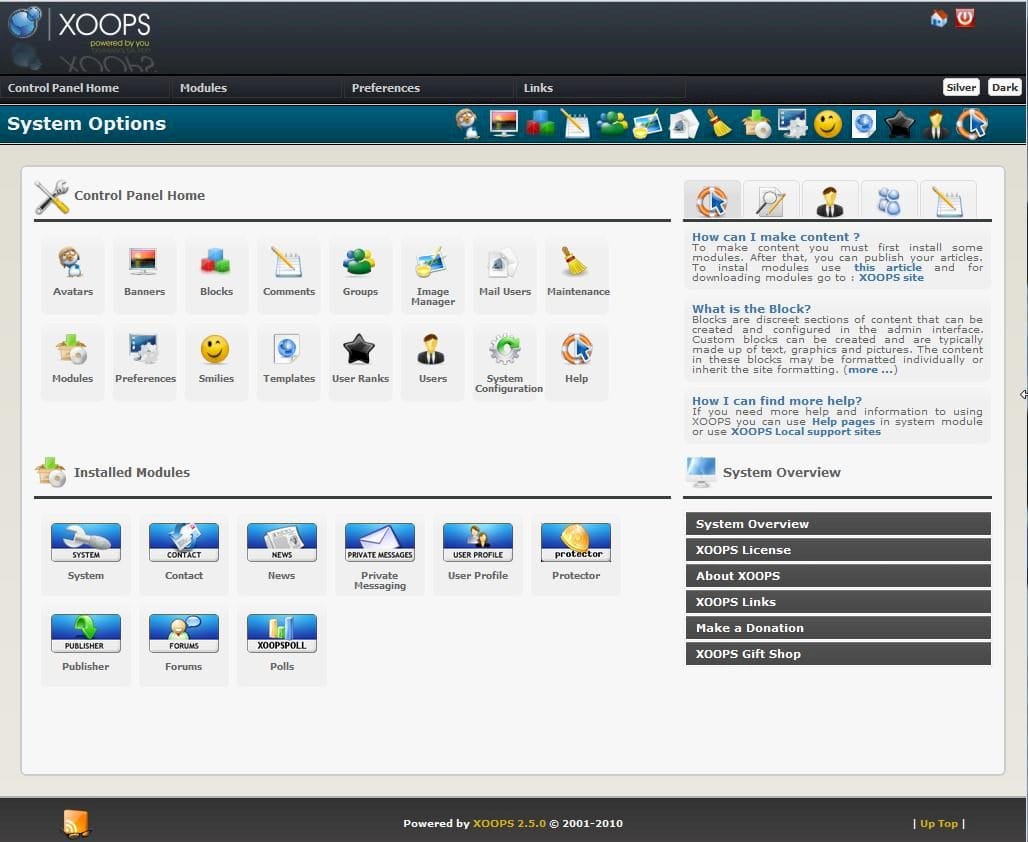
Xoops is an open-source PHP-based CMS that has gained numerous awards over the years. Despite having a small but dedicated community, they continue to maintain its repository, website, and documentation.
XOOPS stands for "eXtensible Object Oriented Portal System." While initially developed as a portal system, it later evolved into a web application framework. Its main purpose is to serve as a web framework for small, medium, and large sites by installing modules. For instance, a small XOOPS installation can be used as a personal weblog or journal, but it can be expanded and customized by adding appropriate modules (both freeware and commercial) to store content such as news, forums, downloads, and more.[3]
Similar to PHP-Nuke, Xoops is a modular system that allows user admins to add modules based on their requirements and customize their site accordingly.
Starting from 2006 until 2009, Xoops received several awards and gained worldwide recognition.
Unlike PHP Nuke, Xoops is still kicking and still has many users and a community that uses it as their website base.
3- e107
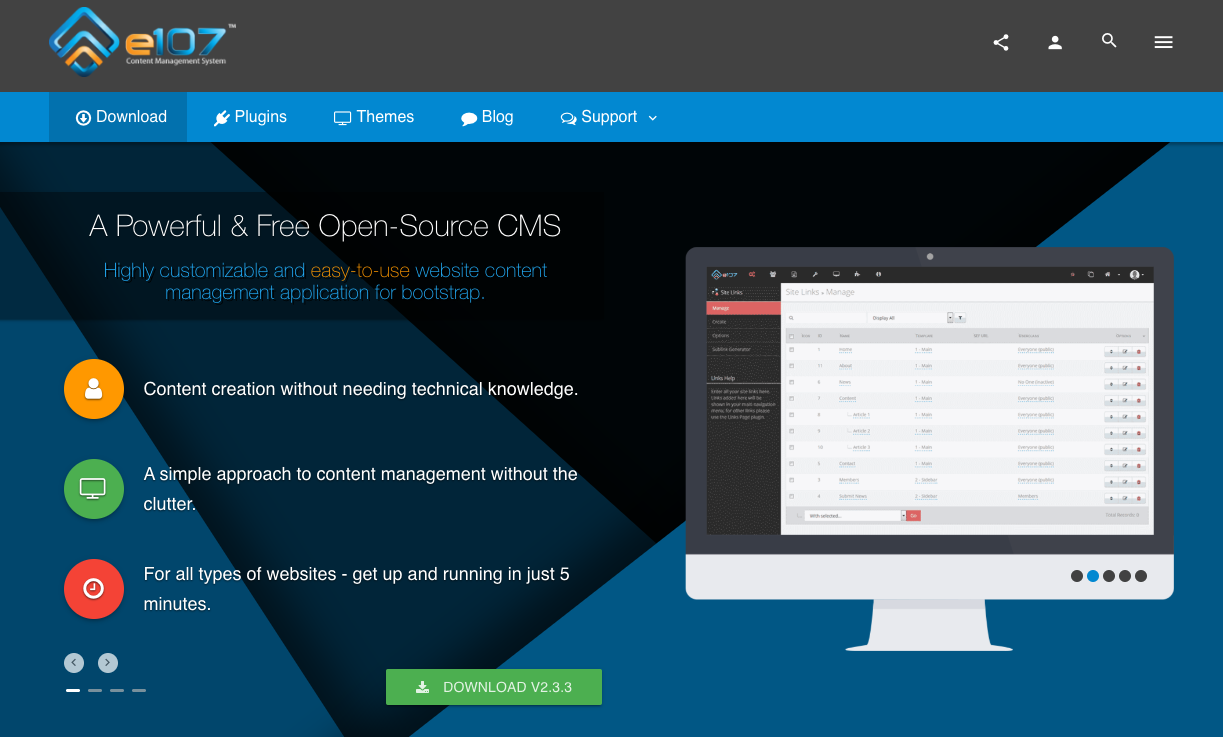
The e107 CMS is a free and open-source content management system written in PHP. It provides a platform for creating and managing dynamic websites with ease. Similar to other CMS platforms, e107 offers features such as modular architecture, user management, and a flexible templating system.
It has a dedicated community of developers and users who actively contribute to its development and provide support. While not as widely known as WordPress or Joomla, e107 CMS continues to be used by individuals and organizations looking for a lightweight and customizable CMS solution.
With it, you can create blogs, static pages, forums, message boards, extend it with plugins and more.
4- PHPFusion

PHPFusion is a free and open-source content management system written in PHP. It provides a platform for creating and managing dynamic websites. Similar to other CMS platforms, PHPFusion offers features such as modular architecture, user management, and a flexible templating system.
As for its current status, PHPFusion is still actively maintained and has a dedicated community of developers and users. Updates and new versions are regularly released, ensuring the continuous improvement and stability of the CMS.
5- DotClear (Since 2002)
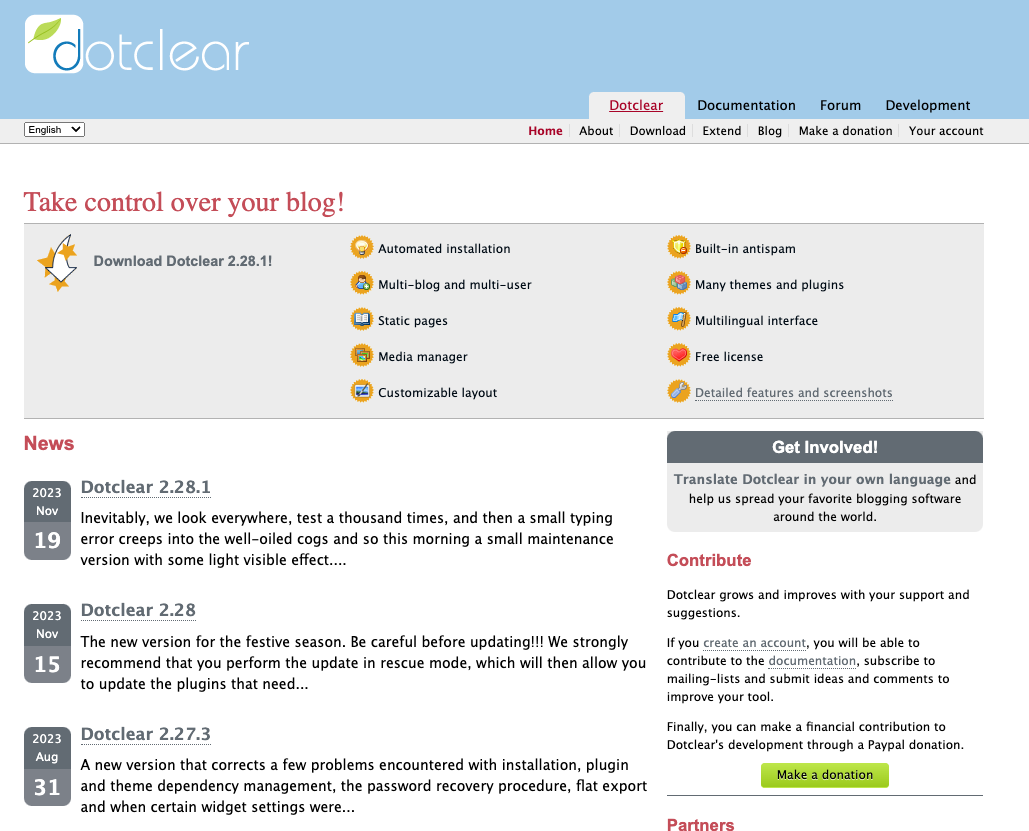
DotClear CMS is a free and open-source content management system written in PHP. It allows users to create and manage dynamic websites with ease. DotClear offers features such as modular architecture, user management, and a flexible templating system.
One of the most prominent features of DotClear is its ability to manage multiple blogs. It also supports the use of Wiki or XHTML syntax for entries and allows the addition of independent pages that are separate from the flow of entries. Furthermore, DotClear supports several database types, including MySQL, PostgreSQL, and SQLite.
It has a dedicated community of developers and users who actively contribute to its development and provide support. While not as widely known as some other CMS platforms, DotClear CMS continues to be used by individuals and organizations looking for a user-friendly and customizable CMS solution.
6- Mambo CMS (No Longer Maintained)
Mambo CMS was a free and open-source content management system written in PHP. It offered a modular architecture, user management capabilities, a flexible templating system, multilingual support, media management features, SEO optimizations, and a supportive community. Mambo CMS is no longer maintained and has been succeeded by Joomla.
7- Modx (Active)
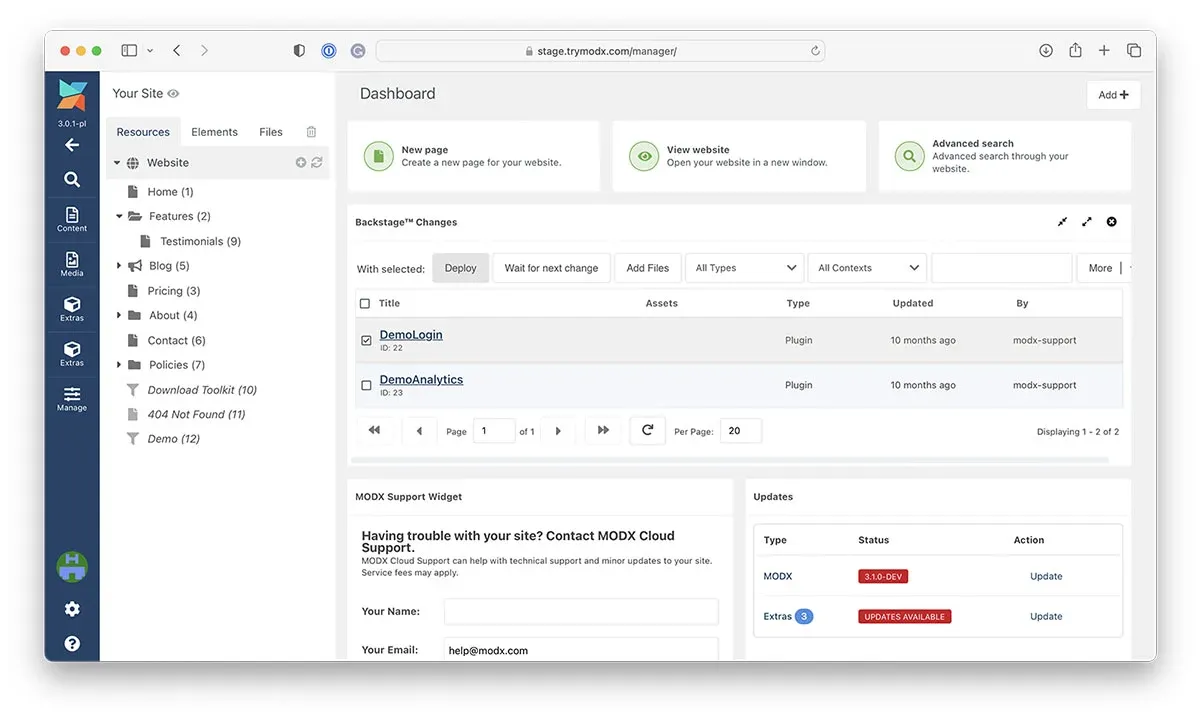
ModX CMS is a free and open-source content management system written in PHP. It provides a platform for creating and managing dynamic websites with ease. ModX CMS offers features such as a flexible templating system, user management, and a modular architecture. It allows users to customize their websites according to their specific needs and requirements.
ModX CMS remains the preferred choice for many companies, web agencies, and enterprises.
8- b2evolution (Social CMS)
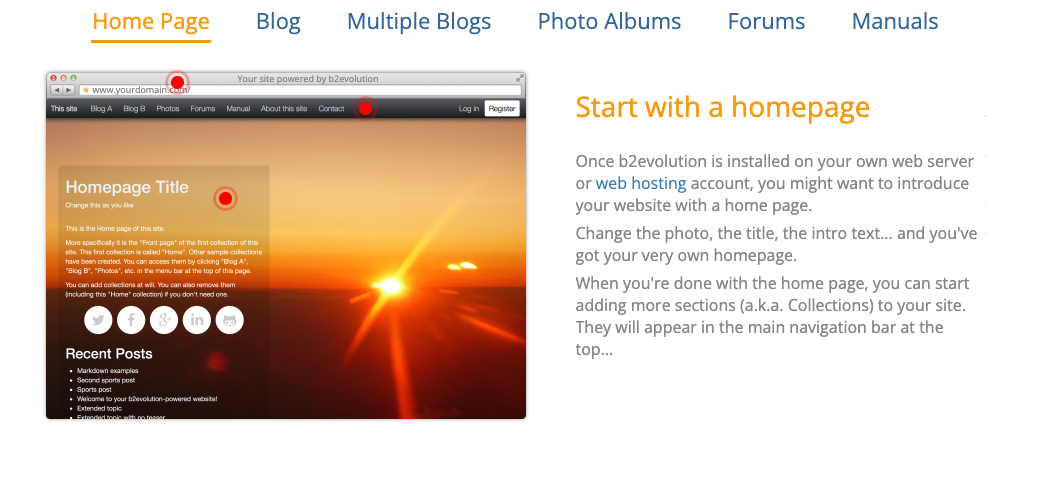
b2evolution is an integrated CMS that includes everything needed to build and maintain websites for sharing and interacting with a community. It offers features such as blogs, galleries, newsletters, forums, member directories, and private messaging. b2evolution is free and open-source software that can be downloaded and run on any web-hosting service.
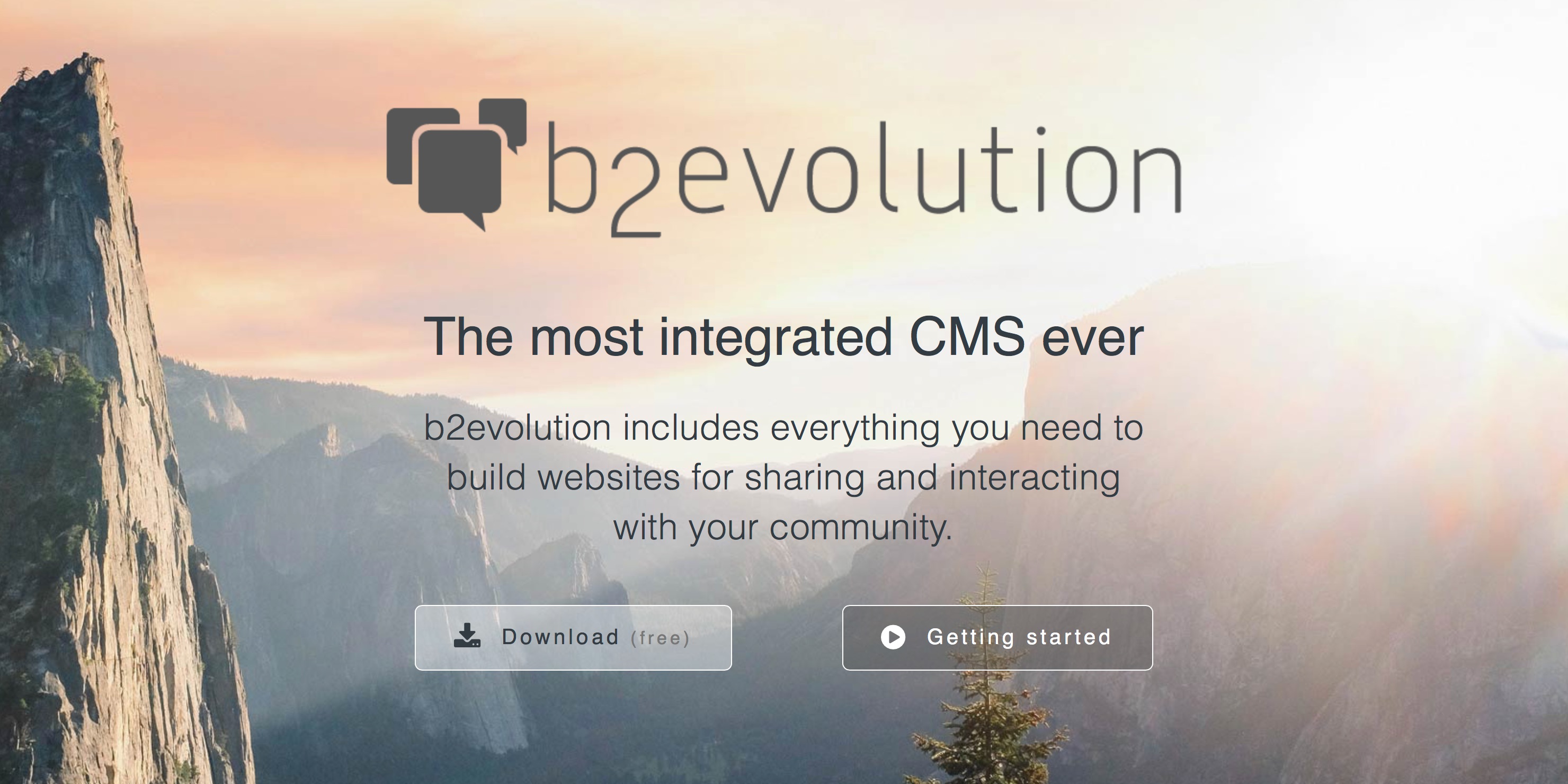
9- Textpattern (For Professional Writers and Bloggers)
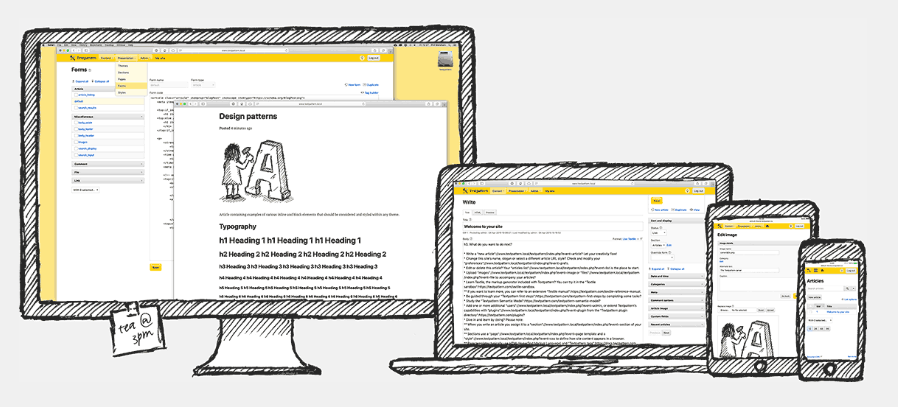
Textpattern CMS is a free and open-source content management system that allows users to create and manage dynamic websites. It is written in PHP and focuses on providing a simple and elegant solution for content publishing. Textpattern CMS offers features such as a flexible templating system, user management, and a modular architecture.
While not as widely known as some other CMS platforms, Textpattern CMS still has an active community of developers and users who contribute to its ongoing development and provide support. Updates and new versions are periodically released to ensure the stability and improvement of the CMS.
Textpattern CMS is used by a variety of individuals and organizations, including bloggers, small businesses, and web professionals who appreciate its simplicity and power in managing content. While it may not have the same level of popularity as WordPress or Joomla, Textpattern CMS continues to be a valid choice for those seeking a lightweight and customizable CMS solution.
Textpattern started about 20 years ago in March 2003, and still active and kicking.
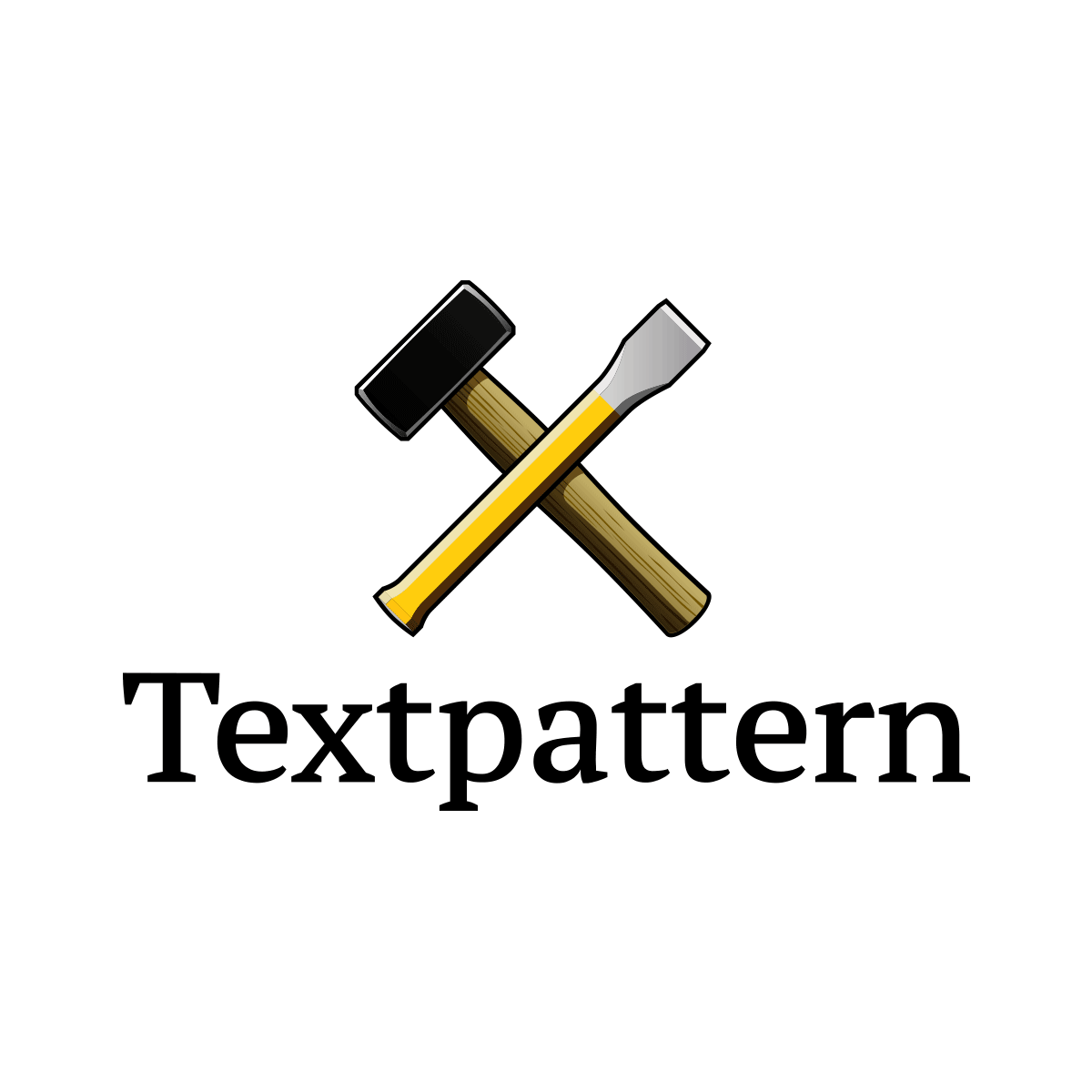
10- Typo3 (Enterprise CMS)
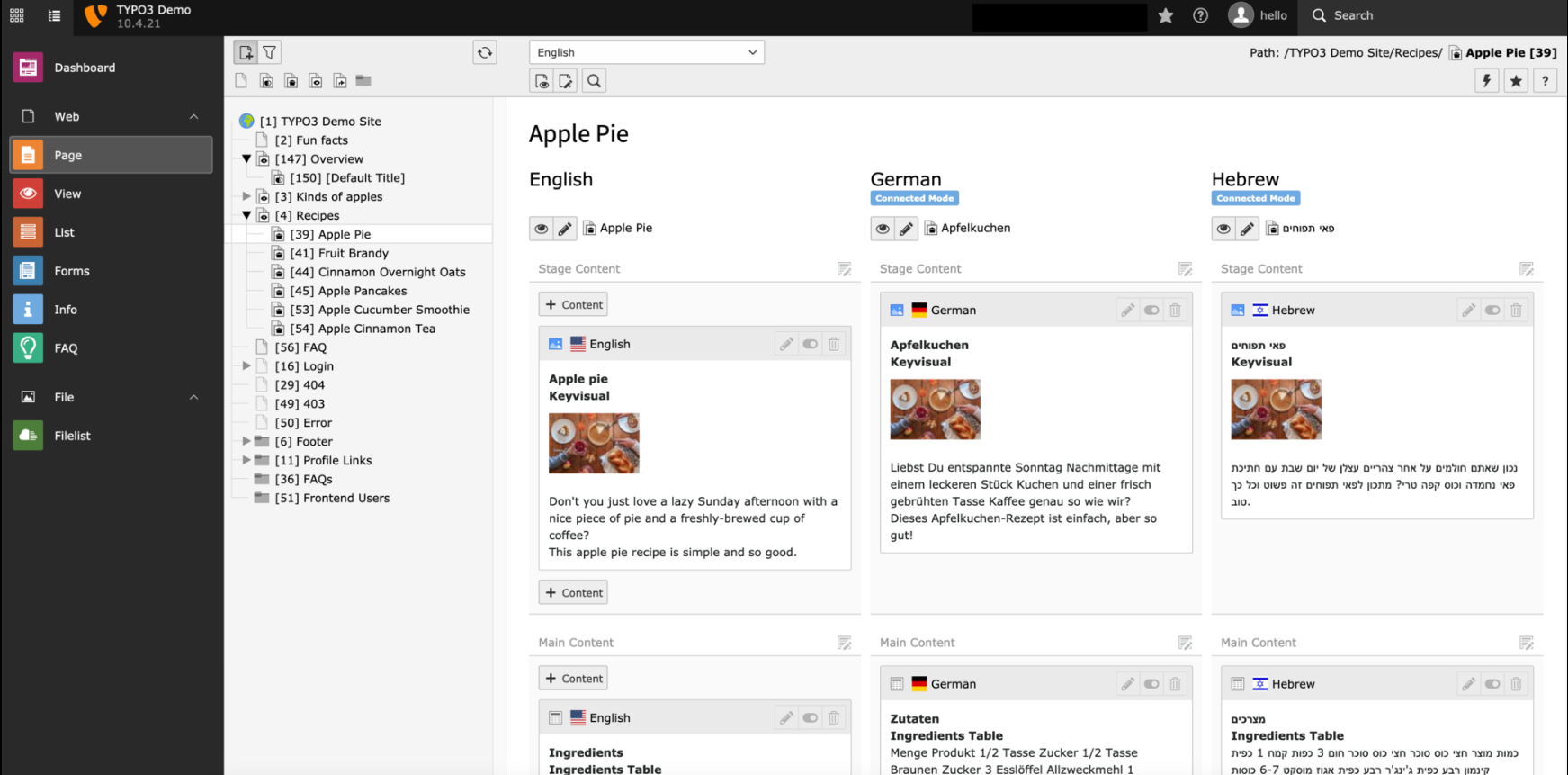
TYPO3 is a robust web content management system (CMS) written in the powerful programming language PHP. It is fully compatible with a wide range of web servers, including Apache, Nginx, and Internet Information Services, and can be seamlessly utilized on various operating systems such as Linux, Microsoft Windows, FreeBSD, macOS, and OS/2. As per Wikipedia, the development of TYPO3 was initiated in 1998.
TYPO3 is a top-notch CMS solution that is available for free and tailored for enterprise-level applications. It effectively combines the advantages of open source code with unbeatable reliability and unmatched scalability. For further details, please visit the official project website.
11- Nucleus CMS

Nucleus CMS, also referred to as Nucleus or NucleusCMS, is a free and open-source content management system written in PHP. It was created by the Nucleus Development Team and first released in 2001. Nucleus CMS was designed to be lightweight and user-friendly, making it a popular choice for bloggers and small websites.
One of the main features of Nucleus CMS is its ability to be extended. It provides a plugin system that allows users to add extra functionality to their websites. Nucleus CMS also offers features such as a WYSIWYG editor, support for multiple authors, categories, comments, and trackbacks.
While Nucleus CMS was once a popular choice, its development has slowed down over the years, and it is not as actively maintained as other CMS platforms like WordPress or Joomla. As a result, many users have switched to more modern and actively supported CMS options.
Despite the announcement of the project's closure one and a half years ago, some dedicated Japanese developers and users have continued to maintain the core of Nucleus CMS.
Nucleus has a similar features and options to the first versions of WordPress.
12- Joomla (Since 2005)

Joomla CMS is an old, free and open-source content management system written in PHP. It is a popular CMS platform that allows users to create and manage dynamic websites. Joomla offers features such as a flexible templating system, user management, and a modular architecture.
As for its current status, Joomla CMS is still actively maintained and has a large community of developers and users. Updates and new versions are regularly released to ensure the continuous improvement and stability of the CMS. Joomla remains a viable choice for individuals and organizations looking for a powerful and customizable CMS solution.
13- Plone (Since 2001)
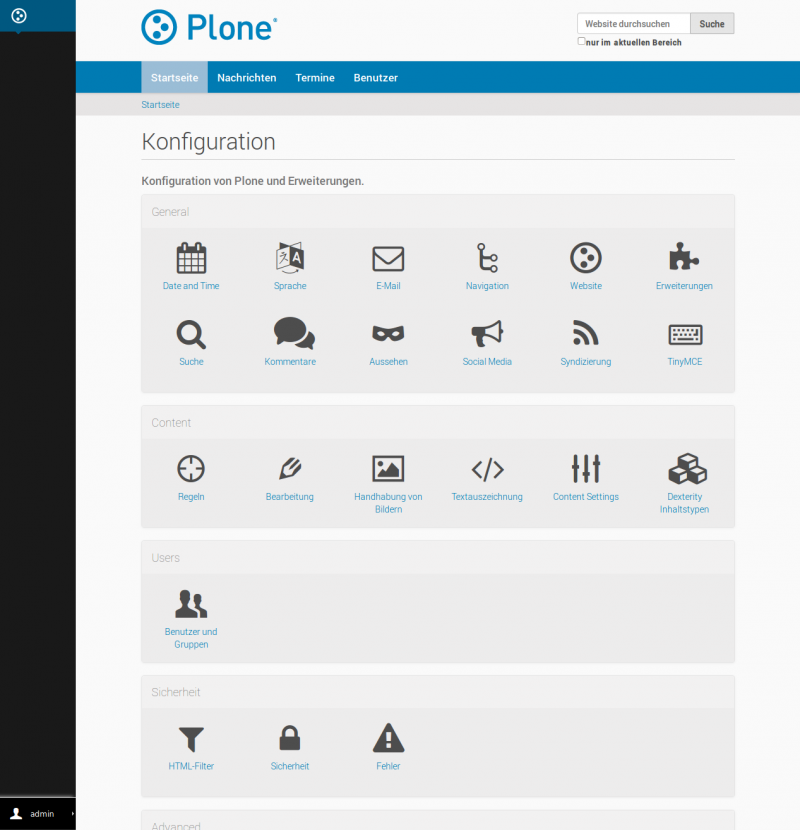
Plone CMS is a free and open-source content management system that provides a platform for creating and managing dynamic websites. It is written in Python and built on top of the Zope application server. Plone CMS offers features such as a powerful templating system, user management, workflow management, and a modular architecture.
Plone CMS was first released in 2001 and has since gained a strong following, particularly in the enterprise and government sectors. It is known for its robust security features, scalability, and extensibility. Plone CMS continues to be actively maintained and updated by its dedicated community of developers and users.

14- Drupal
Drupal CMS is a free and open-source content management system written in PHP. It is a highly flexible and customizable CMS that allows users to create and manage dynamic websites. Drupal offers features such as a powerful templating system, user management, and a modular architecture.
Drupal was initially developed by Dries Buytaert as a message board in 2000. It later evolved into a full-fledged CMS and was released as an open-source project in 2001. Since then, Drupal has gained a large and active community of developers and users who contribute to its ongoing development and provide support. It has become a popular choice for building websites of various sizes and complexities.

15- Concrete CMS
Concrete CMS (formerly concrete5) is an open-source content management system specifically designed for ease of use. Users can edit site content directly from the page, thanks to its in-context editing feature. It also provides version management, image editing capabilities, and a variety of blocks for adding functionality. Concrete CMS follows a model-view-controller architecture and offers support for developer API, caching, version tracking, and search engine optimization.
Concrete CMS was first introduced in 2008 and continues to be the preferred choice for numerous web agencies and enterprises.
16- eZ Publish
eZ Publish is an open-source PHP content management system developed by Ibexa. It supports the development of customized web applications and is widely used globally. In 2015, eZ Platform was introduced as a replacement for eZ Publish.
17- Geeklog
Geeklog is an open-source CMS written in PHP that focuses on performance, privacy, and security. It supports various databases and offers features like comments, polls, calendar, and content syndication. It is a popular choice for web-based CMS along with WordPress and Drupal, often included in website packages and software installers.
Geeklog is actively developed and has been accepted into the Google Summer of Code as a mentor organization for multiple years. It is used by notable websites such as Groklaw and Mac OS X Hints, which have been operating since 2003 and 2000, respectively.

18- Silverstripe

Silverstripe CMS is an exceptional and powerful content management system (CMS) and framework for effortlessly creating and maintaining stunning websites and dynamic web applications.
It offers a user-friendly web-based administration panel that empowers users to effortlessly make modifications to various aspects of the website, including an intuitive WYSIWYG website editor. The heart of this remarkable software is the Silverstripe Framework, a robust and versatile PHP Web application framework.
It is worth mentioning that Silverstripe CMS is released under the terms of the BSD License, which further enhances its credibility and reliability.

missed, drop us an email.
If you know of any missing historical CMS, that we





